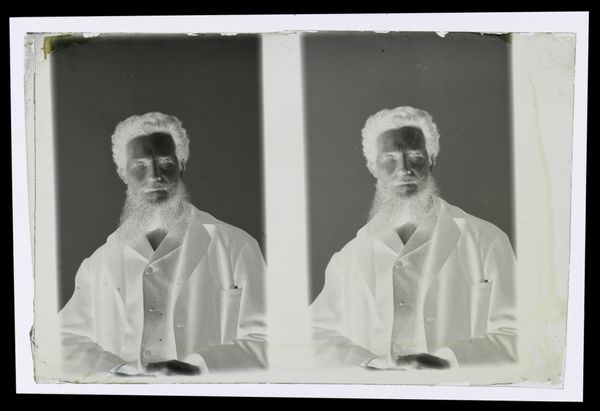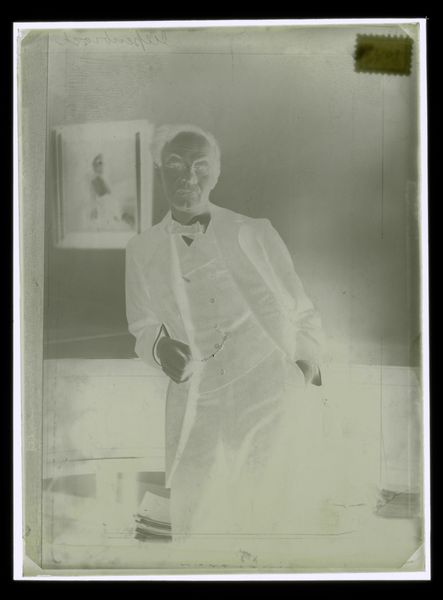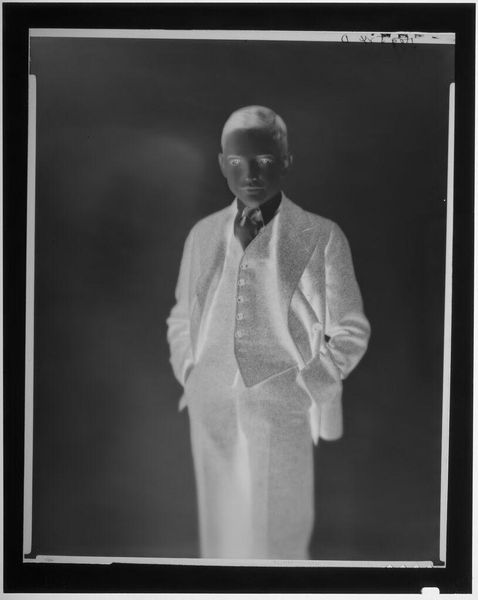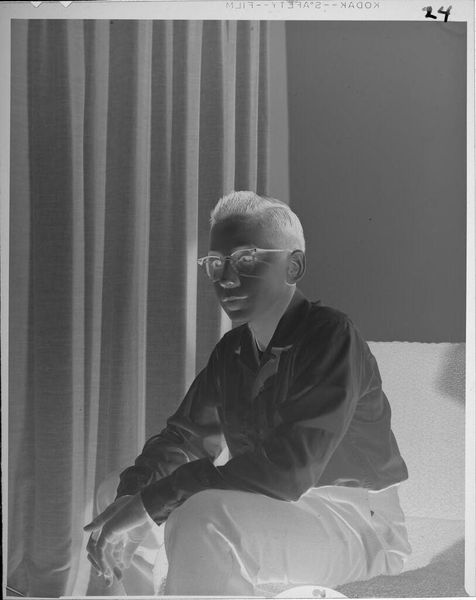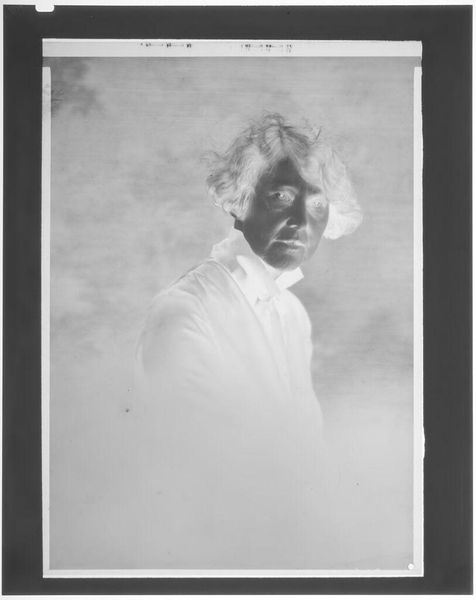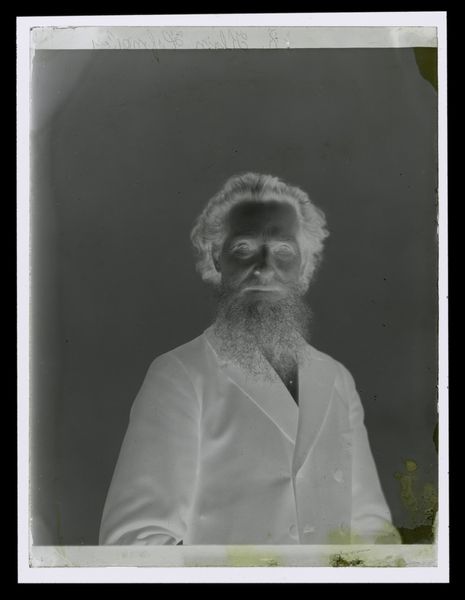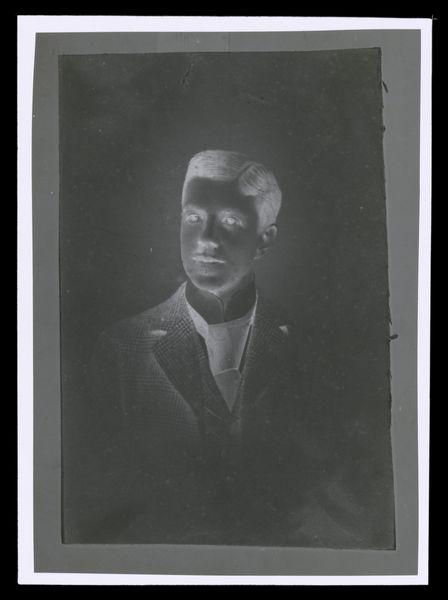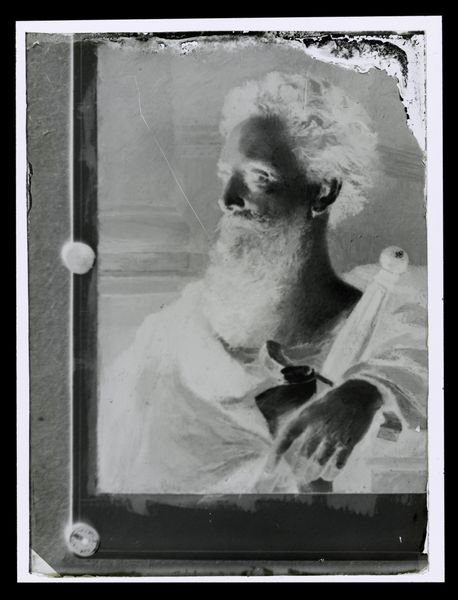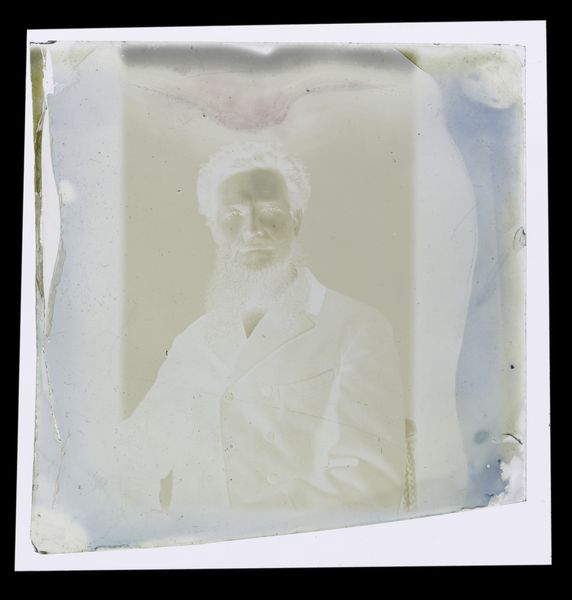
photography, gelatin-silver-print
#
portrait
#
photography
#
portrait reference
#
gelatin-silver-print
#
portrait art
#
realism
Dimensions: height 100 mm, width 160 mm
Copyright: Rijks Museum: Open Domain
Curator: Looking at this gelatin silver print, a photograph from roughly 1865 to 1900 titled "Portret van een onbekende jonge man", what strikes you first? Editor: There's something spectral about this, even uncanny. The inversion of light, characteristic of a photographic negative, makes him look like a ghost caught in time, almost mythic, considering we don't know his identity. Curator: Indeed, the ambiguity around identity is compelling. This mode of portraiture, so popular then, solidified the middle class's aspiration to permanence and status, but it simultaneously obscured individuality through convention. The negative as artifact further complicates that tension. Editor: It's the negative itself, this almost discarded state, that fascinates me. It's the source, but it’s rarely meant for public viewing. Displaying it disrupts the intentionality, reminding us how images can be manipulated and mediated. Curator: The act of taking a photograph had very different social weight than it does today. These images created, solidified, and perpetuated ideologies around ideal appearance and dress in a very visible way. In our contemporary society of instant gratification, we may well see something inherently anachronistic and otherworldly about these objects. Editor: Anachronistic yes, because it presents a time both recognizable through fashion and yet utterly foreign, but it has also allowed people to establish long-running connections to their histories, memories, and experiences, no? How potent is the photograph in relation to personal connection and psychological state? The act of preservation via these items reveals long chains of emotional importance that persist even today. Curator: Absolutely, they function as both historical documents and deeply personal objects imbued with significance and emotional power that shift over time. Seeing this negative—raw and stripped bare—I see an evocative glimpse of our collective photographic past. Editor: It serves as a potent reminder of time’s passage and our relentless effort to capture a moment, a face, a fragment of life before it vanishes completely. An invitation to reflect on how we construct our own narratives and grapple with mortality through the images we create and consume.
Comments
No comments
Be the first to comment and join the conversation on the ultimate creative platform.
